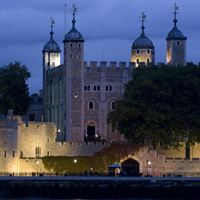The Tower of London
Advertisements

 The Tower of London is intimately intertwined with the history of London and exceeds every building in England in terms of historical interest.
The Tower of London is intimately intertwined with the history of London and exceeds every building in England in terms of historical interest.
Throughout its long life it has been a fortress, a Royal residence, and a State prison, and for centuries acted as the nucleus of the city of London.
Thought to have had a Roman origin, the authentic builder of the White Tower was William the Conqueror, which was afterwards surrounded by walls and a moat, the present fortifications being constructed by Henry III.
When William the Conqueror won the battle of Hastings in 1066 as part of the Norman Conquest, he could not have known the singnificance of his victory and how it would shape the country's future for centuries and pave the way for what we now know as modern English culture.
The tower was the most significant of a number of castles and fortified constructions which were built in strategic locations to strengthen the Norman position against rebellions.
The Tower is home to the Regalia or Crown Jewels, which are well worth a visit (see our Attractions page for discount tickets). Exhibited in Jewel House, the jewels include St. Edward's Crown, used at the coronation of all the kings and queens since Charles II and some of the largest stones in the world. The various crowns, the royal sceptre, etc form a collection of great interest.
The entrance is from Great Lower Hill. The Yeomen of the Guard, popularly known as Beefeaters, have charge of the Tower, and visitors can find the way by their direction to the different points of interest open to the public.
Brief history of the Tower of London
Royal Armouries of the Tower of London
See the London History section for more history.